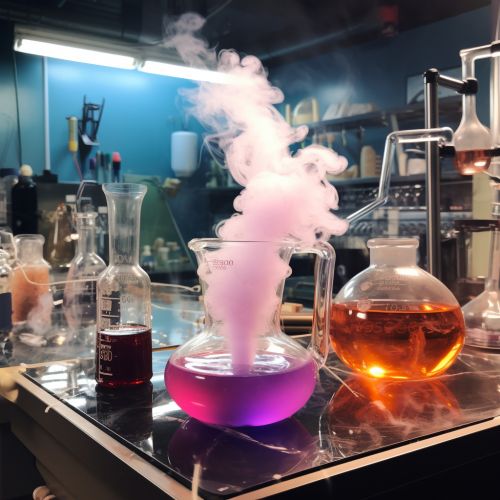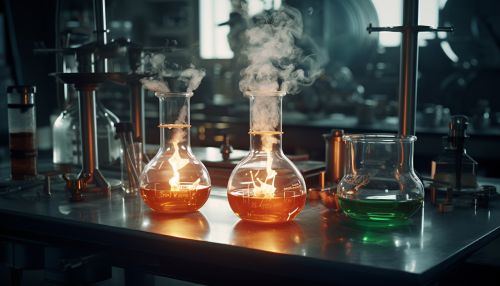Chemical Reaction
Introduction
A chemical reaction is a process that leads to the transformation of one set of chemical substances to another. Classically, chemical reactions encompass changes that only involve the positions of electrons in the forming and breaking of chemical bonds between atoms, with no change to the nuclei (no change to the elements present), and can often be described by a chemical equation.
Classification of Chemical Reactions
Chemical reactions are categorized into many types. These include combustion, synthesis, decomposition, single displacement, and double displacement reactions.


Combustion
Combustion reactions occur when a compound, usually one containing carbon, combines with the oxygen gas in the air. This process is commonly known as burning. In such reactions, the products are always carbon dioxide and water.
Synthesis
Synthesis reactions occur when two or more simple compounds combine to form a more complicated one. These reactions always involve the use of heat, light, or electricity that breaks down existing bonds holding the atoms of the reactants together.
Decomposition
Decomposition reactions are the opposite of synthesis reactions. They involve a single compound breaking down into its component parts or simpler compounds. These reactions often involve an input of energy in the form of heat, light, or electricity.
Single Displacement
Single displacement reactions occur when one element trades places with another element in a compound. These are usually ion exchange reactions.
Double Displacement
Double displacement reactions occur when parts of two ionic compounds are exchanged, making two new compounds.
Factors Influencing Chemical Reactions
Several factors can influence the rate and outcomes of chemical reactions. These include the concentration of reactants, temperature, pressure, the presence of a catalyst, and the surface area of the reactants.
Concentration
The concentration of the reactants is directly proportional to the rate of reaction. The higher the concentration of the reactants, the faster the rate of the reaction.
Temperature
An increase in temperature typically increases the rate of the reaction. This is because higher temperatures increase the energy of the molecules, allowing them to collide more often and with more intensity.
Pressure
In reactions involving gases, an increase in pressure leads to a faster reaction. This is due to molecules being closer together, which increases the frequency of collisions between them.
Catalyst
A catalyst is a substance that can help to increase the reaction rate by lowering the activation energy needed for the reaction to occur.
Surface Area
An increase in the surface area of the reactants exposes more of the material to the other reactant, leading to a faster reaction.
Conclusion
Chemical reactions are an integral part of both chemistry and life. Understanding the different types of reactions and the factors that influence them can help us to understand the world around us, and even our own bodies.
